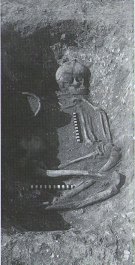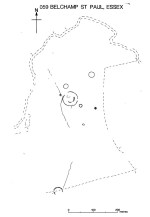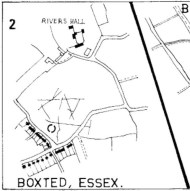Souterrain (destroyed): OS Grid Reference – NO 3052 5152
Also Known as:
- Airlie III (Wainwright 1963)
- Canmore ID 32385
Archaeology & History
There are no remains left of this old ‘weem’, earth-house, or souterrain as they are now commonly known. It was one of at least seven separate souterrains beneath the fields between the Barns of Airlie and Brae of Airlie, but very little is now known of this one. The first and only real note of the site was given in Mr A. Jervise’s (1864) essay on the antiquities of Airlie parish. Nearly a hundred years later when F.T. Wainwright (1963) went to investigate any possible remains, he found very little, telling:
“A possible location for Airlie III…presented itself on 24 June, 1951, when Mr D.B. Taylor and I noticed a considerable number of boulders and slabs cast up in the field which lies over the wall from the entrance to Airlie I (souterrain). The farmer was aware that there was a heavy concentration of stones spread over an area of two or three thousand square feet, but he could add no further information. In 1951 we were not able to do more than record this possibly significant scatter of stones—it lies between 150 and 200 feet west from the present entrance of Airlie I on a bearing of 260º—and to note that it could very well indicate a souterrain settlement.”
Most of the scattered stone was subsequently removed for use in walling and no trace remains of the place.
References:
- Jervise, A., “Notice of Antiquities in the Parish of Airlie, Forfarshire,” in Proceedings of the Society of Antiquaries, Scotland, volume 5, 1864.
- Wainwright, F T., The Souterrains of Southern Pictland. RKP: London 1963.
© Paul Bennett, The Northern Antiquarian
The map could not be loaded. Please contact the site owner.




